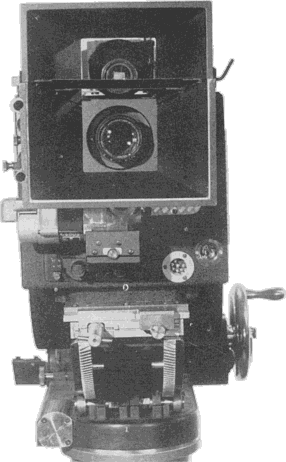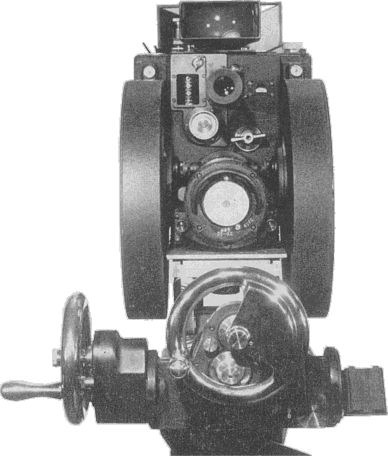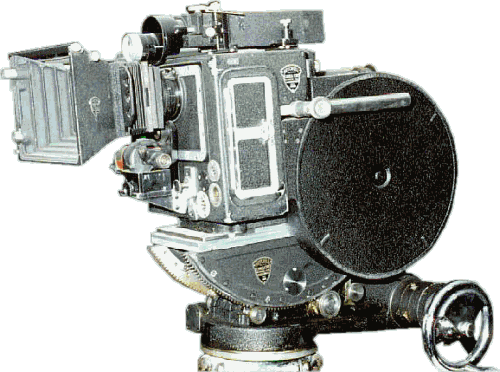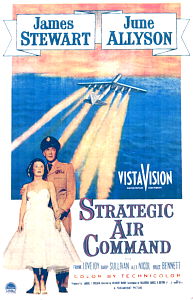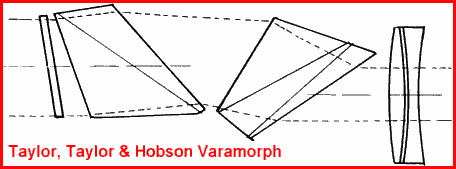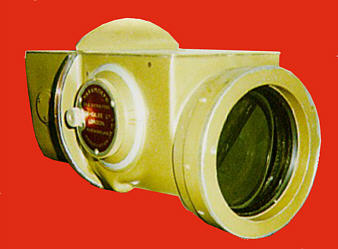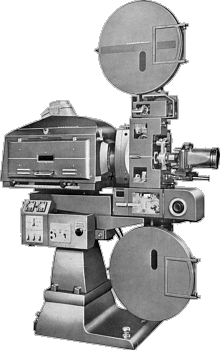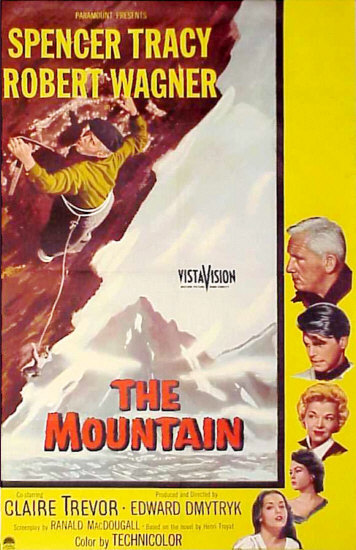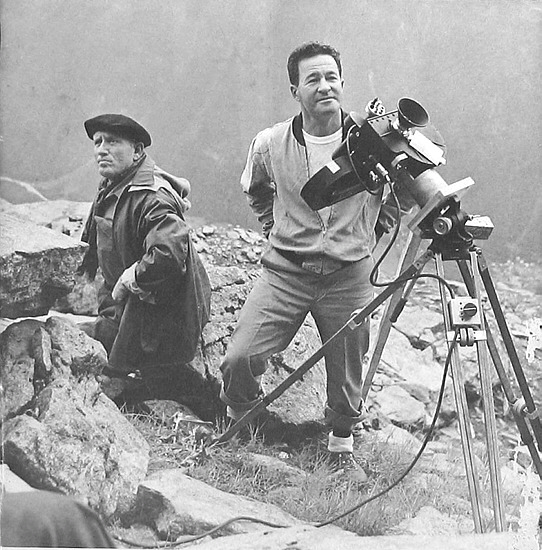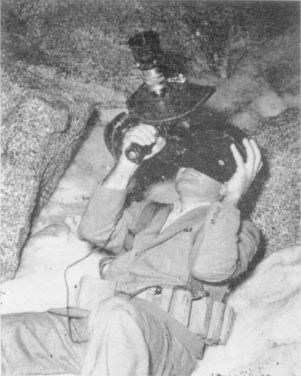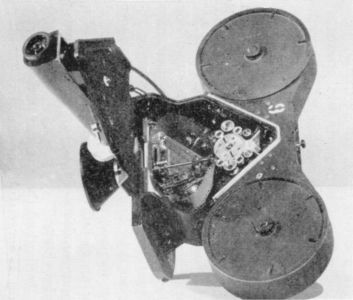|
|
|
|
|
|
|
|
|
|
|
|
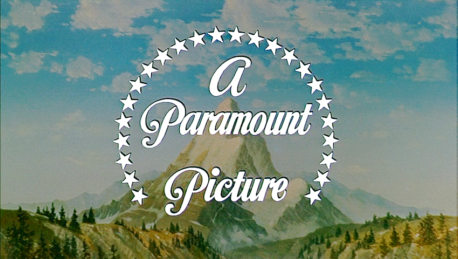 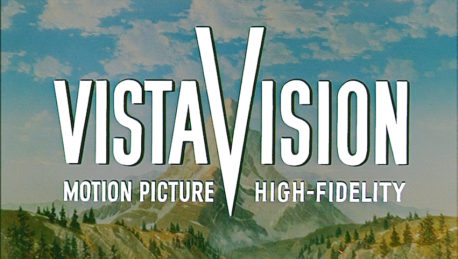 |
|
WINDOWS MEDIA FORMAT (WMA)
The VistaVision Elephant Ear camera, fresh from the Mitchell factory, photos published in 1955.
Photo courtesy of Mark Gulbrandsen
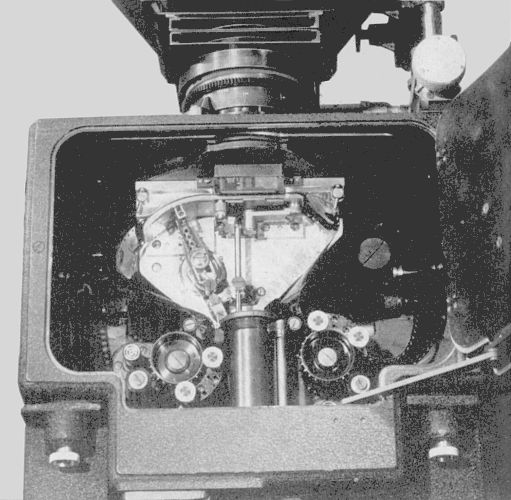
Peering down from the top of the VistaVision elephant ear camera, we see the camera movement. Film enters the gate at the right side and travels to the left as the claw pulls the film past the aperture.
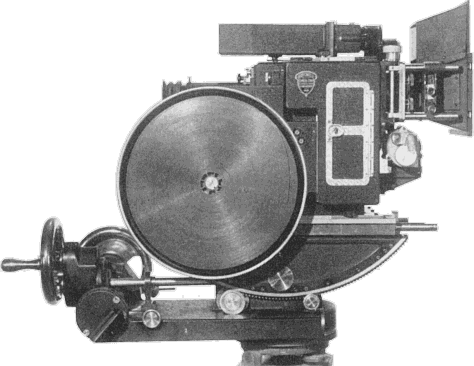
VistaVision camera with supply chamber open. That's a lot of film, 2,000 feet to be exact. Normal 35mm cameras typically used a 1,000 foot load and VistaVision required twice as much to shoot the same amount of time.
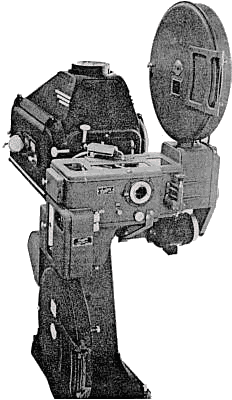
Left, eight perf horizontal VistaVision projector designed to run contact prints from the original camera negative. Few films were shown in this format because the quality of the Technicolor reduction prints was so good that they appeared sharp and grain free on screens fifty feet wide or wider. In this projector the film travelled from right to left, as viewed from the back of the projector. The supply reel was located on the bottom and the takeup reel on the top. A 1954 article on the development of these Century projectors may be found in the Tech Library VistaVision section.
VistaVision films could feature any of three different sound formats: Optical mono on either the standard 4-perf reduction or 8-perf contact print, a Perspecta® sound fake stereo optical track on either type of print. Perspecta® was also used by M-G-M on a number of its CinemaScope films, or the exceedingly unique (one film only) six channel magnetic stereo on an eight perf horizontal print (See Story of a Patriot later in this section).
Perspecta® sound was plain mono sound but it included three low frequency control tones at 30, 35, and 40hz. The film soundtrack had a lower limit of 63hz to prevent the control tones from being audible. Depending on the presence of or volume of any of the three tones the film soundtrack could be played out across three speaker systems located behind the screen. Unlike true stereophonic sound where music, dialog, and sound effects can all emanate from their correct locations, Perspecta® could only operate with sound effects when no music or dialog was present because all sound moved at once. The only benefit of Perspecta®: was that it cost virtually nothing to add to the standard optical soundtrack and theatres not equipped with the necessary "integrator", amplifiers, and speakers could play it just like any other mono track. Equipping a theatre for Perspecta® cost nearly as much as a real stereophonic sound system. One difference being that no auditorium speakers were required. It was no substitute for real stereo but it could sound effective, if somewhat gimmicky. Today a number of Perspecta® films have been transferred to home video with stereo sound. What you hear from these transfers is not the same as heard in a theatre because the music tracks (which most benefit from stereo playback) are derived from the multi-track recordings. Directional sound effects may or may not be included in the video transfer. Overall, you'll hear a much better soundtrack than was foisted off on the public in the mid 1950's.
Paramount Presents 8-Perf VistaVision Projection
We present a trade ad for the spectacular presentation of Strategic Air Command, and some promotional photos.
Click above to see the ad.
Anamorphic VistaVision Paramount developed and promoted VistaVision in the U.S. In England, The Rank Organisation adopted the high resolution process. In addition to the standard 35mm reduction prints, Rank released several films in 8 perf horizontal format. In 1957, they announced that another print format was available, an anamorphic system similar to the one proposed by Paramount but with some differences. In the Rank anamorphic format, the print received a 1.33x squeeze instead of 1.5x that Paramount had recommended, and, like Paramount, they reverted back to the Academy 1.37:1 frame specifications. This yielded a screen image close to 1.85:1, the most favored non-CinemaScope aspect ratio. The benefit derived from the anamorphic print is that the frame was 33% larger than a "flat" 1.85:1 print, resulting in a brighter, sharper image on screen. The Rank anamorphic system offered a slightly better image than Paramount's anamorphic system because a slightly larger part of the original negative was used. For projection of their anamorphic prints they offered the "Varamorph" adjustable anamorphic prismatic lens, illustrated below. Obviously Panavision, Superscope, and Hi-Lux variable anamorphic lenses, which had been on the market since 1954, could be used for this system as well.
The "Varamorph" (below) was manufactured by Taylor, Taylor & Hobson, a highly respected optical house that had become a division of Rank by this time, and marketed by Gaumont-Kalee.
The Kalee Varamorph lens, designed for Rank's anamorphic 1.85:1 VistaVision, wound up showing CinemaScope for the most part. The Varamorph is fully adjustable from 0x to 2x anamorphic decompression. The lens has marks for 1.37x, 1.5x, and 2x. J. Arthur Rank ordered a small number of 1.33x anamorphic prints. Other than those, the Varamorphs wound up being locked off at 2x for CinemaScope films.
At right, Gaumont-Kalee 35mm projector fitted with magnetic and optical sound plus a Varamorph adjustable anamorphic lens.
Photo Courtesy of David Johnson
While VistaVision made provision for several special print formats, the vast majority of films were only seen in an optical reduction to 35mm four perf. Seen here is a strip of film from The Ten Commandments which shows the maximum 1.66:1 frame size. The illustration, reproduced in June 2001, from a 45 year old piece of film, illustrates the stability of Technicolor's dye transfer printing system.
Film courtesy of Richard Ducar
Development and first use of the VistaVision butterfly camera in production of Paramount's The Mountain merited an International Photographer cover photo of star Spencer Tracy and 2nd unit director of photography Til Gabani* on a European mountain location. Gabani was a bit outside his normal realm. He was responsible for underwater cinematography in dozens of major films including Fox's Beneath the 12-Mile Reef and Disney's 20,000 Leagues Under the Sea both of which used CinemaScope.
*Sometimes Credited As:
Atillio Gabani
Atillio Gabanni
Atillio Gabbani
Till Gabbani
Til Gabbani
Lightweight double-frame (35mm longitudinally) VistaVision camera developed by Paramount for use on locations which require extreme portability. The camera weighs only 17 1/2 pounds, complete with motor and loaded with 400 feet of film (it takes 1000-foot magazines also). It is rated equal to heavy-duty camera in steady operation and has a lens range from 28mm to 150mm. Above Til Gibbani is shown with camera on location, wearing battery belt. Below, camera is pictured with cover off.
July 7, 1956 issue of Motion Picture Herald
Courtesy of Roland Lataille
You are on Page 2 of






Read the complete text of the VistaVision article written for
WideGauge Film and Video Monthly
E-mail the author
CLICK HERE©1996 - 2004 The American WideScreen Museum
http://www.widescreenmuseum.com
Martin Hart, Curator
